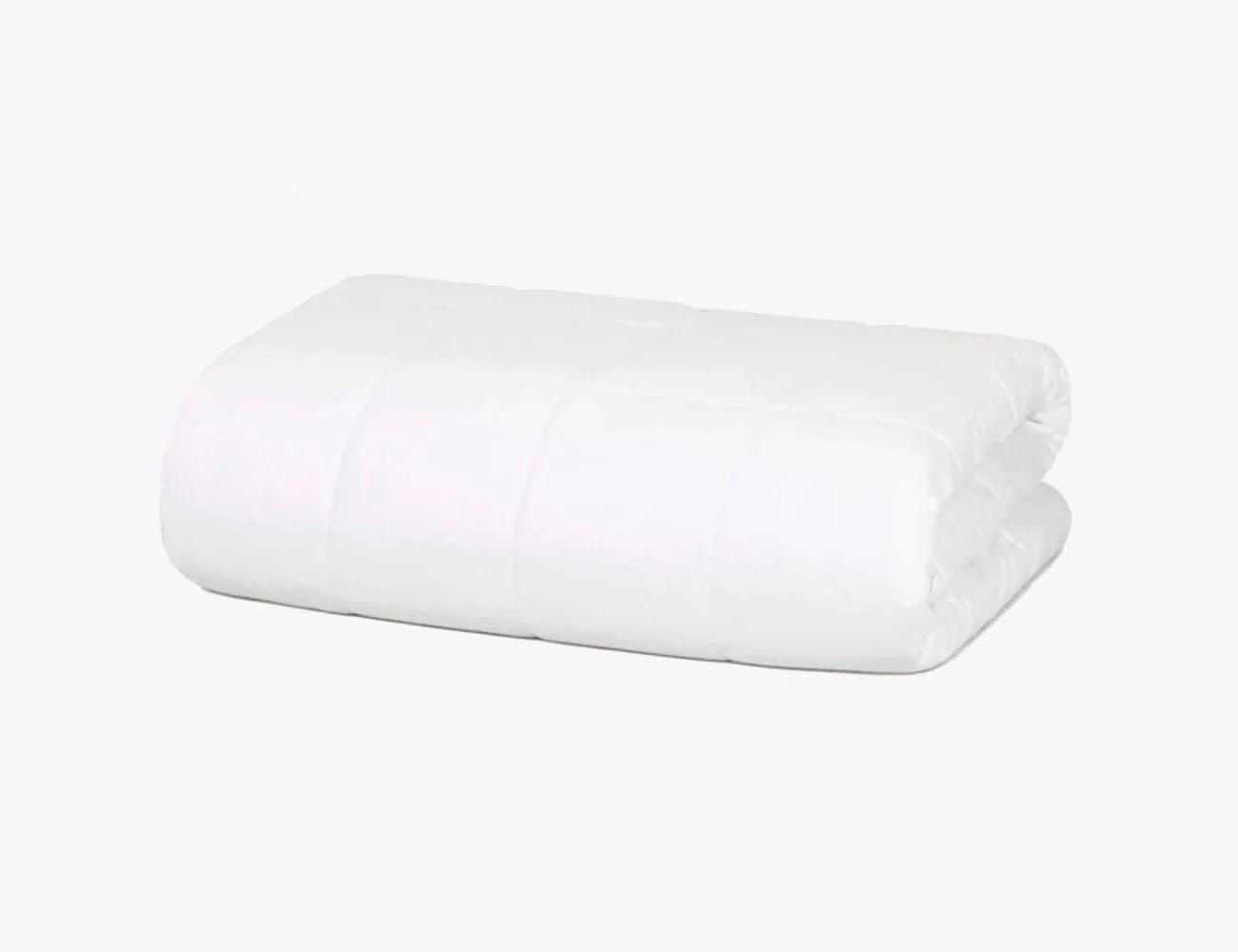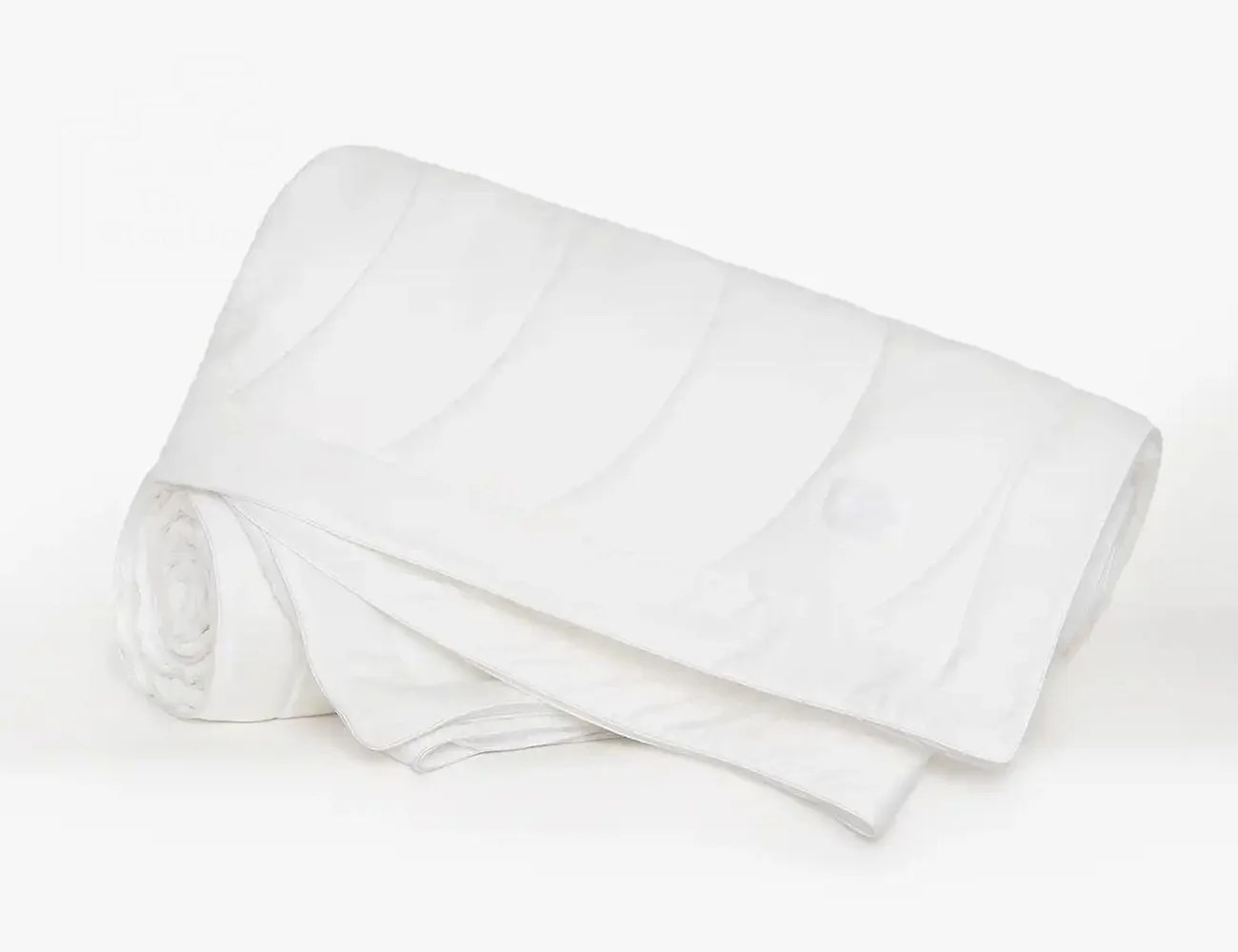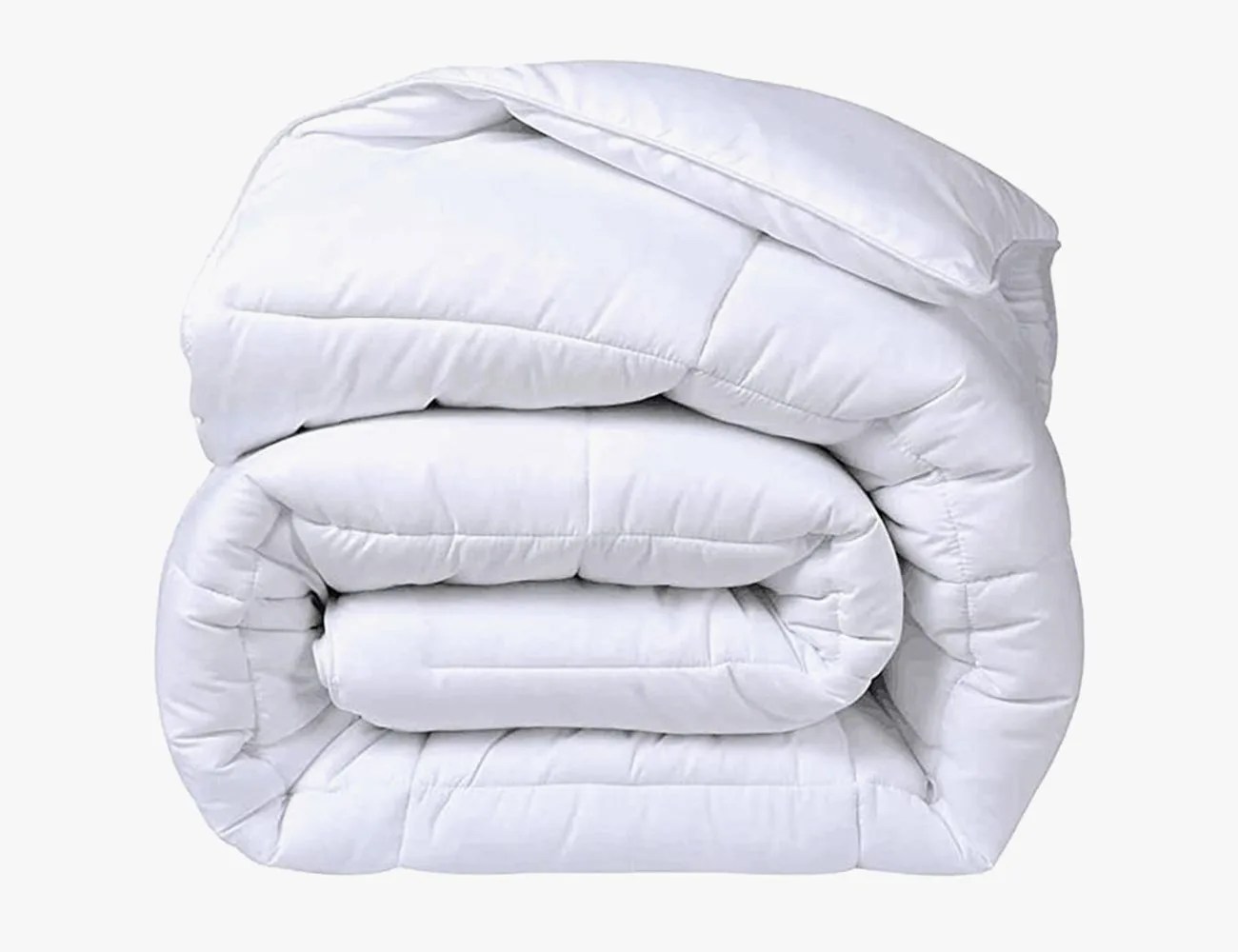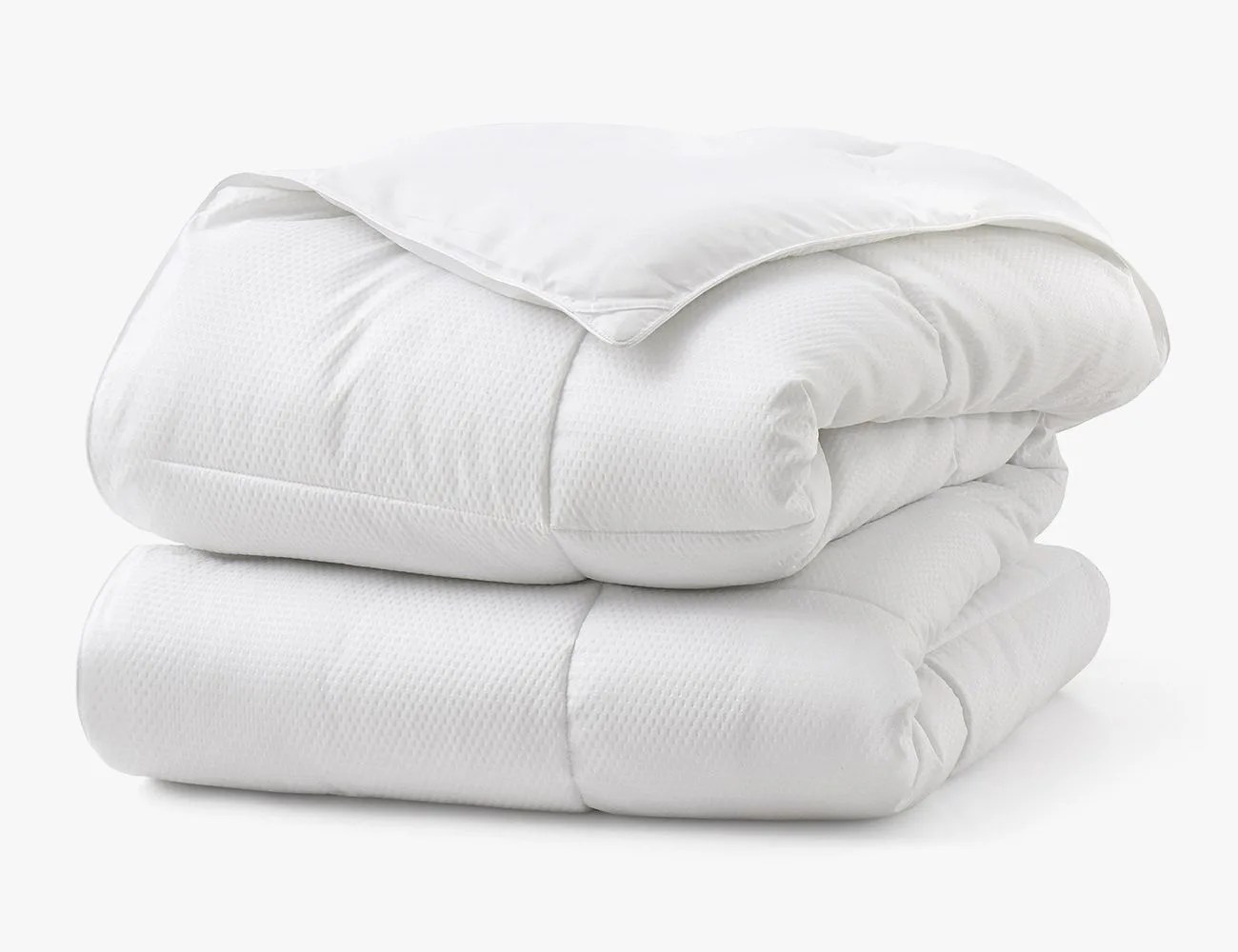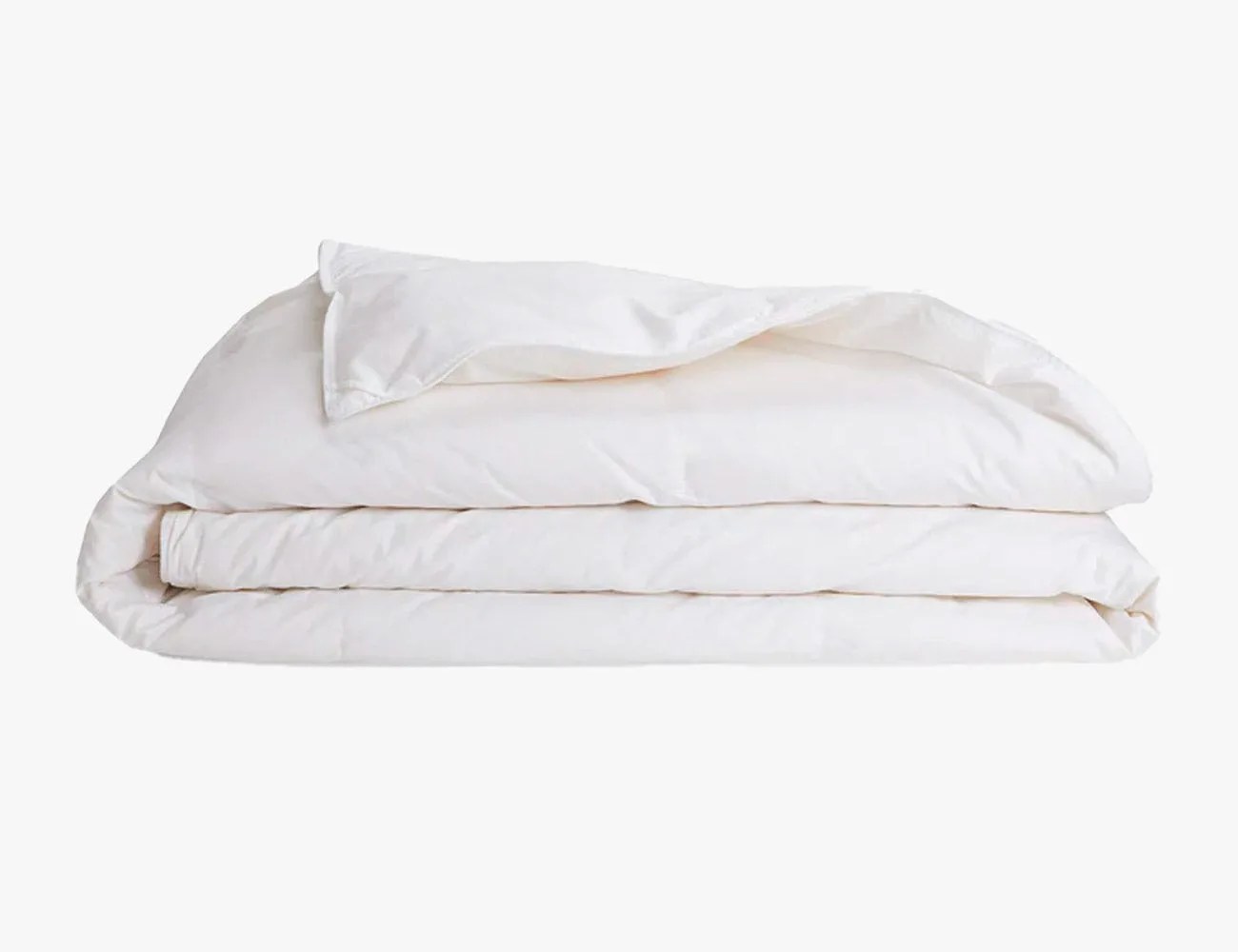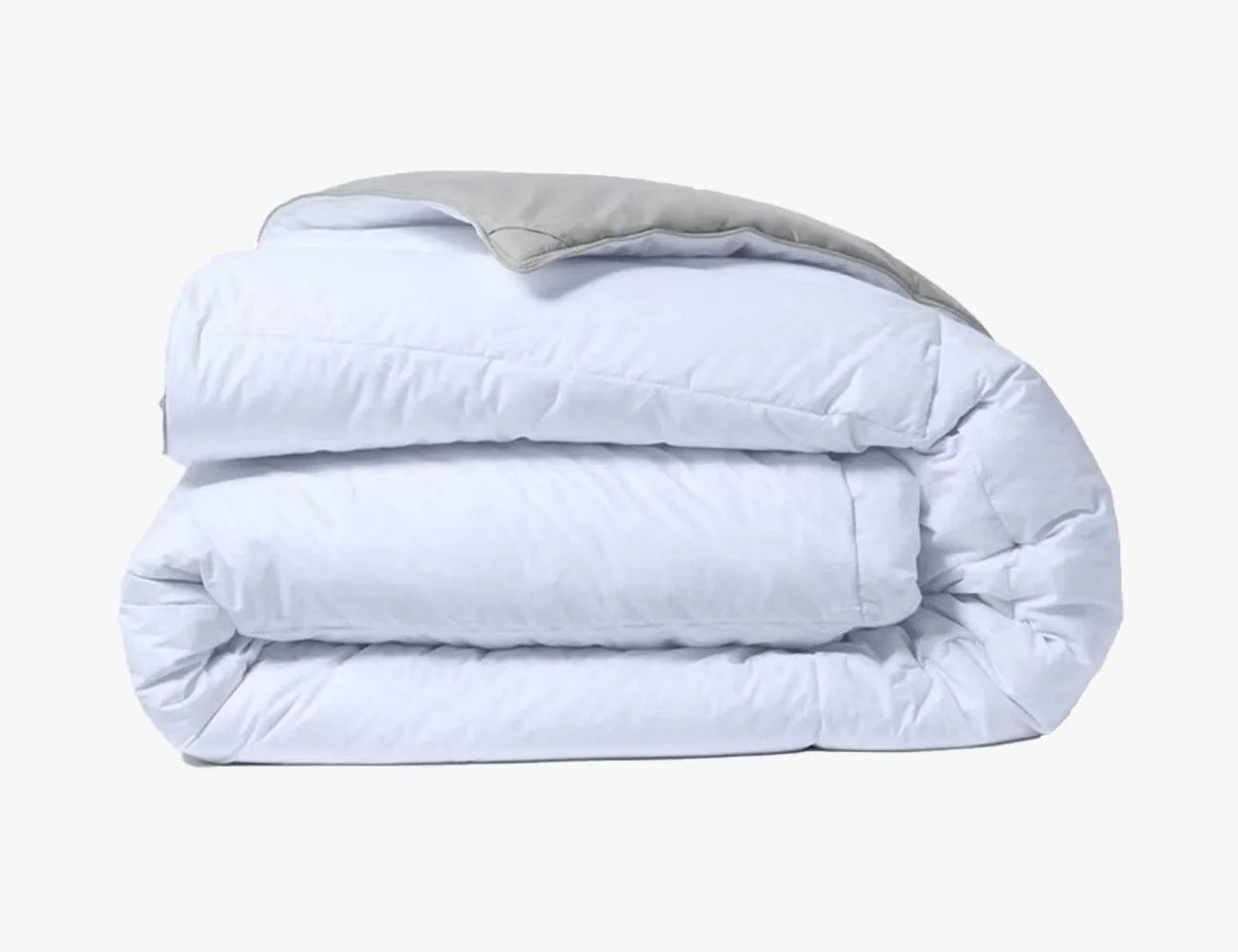Hot sleepers have a hard time sleeping comfortably already. Throw in high temperatures and unbearable humidity, and sleeping in the summer is more of a nightmare than an actual nightmare. If you’re someone who needs to be covered to fall asleep, these comforters offer all the coziness of a duvet, minus the night sweats.
Products in the Guide
-
SlumberCloud Lightweight Comforter
Best Overall Cooling Comforter
Read more -
Buffy Breeze Comforter
Best Upgrade Cooling Comforter
Read more -
COHOME Queen 2100 Series Cooling Comforter
Best Budget Cooling Comforter
Read more -
Purple TempBalance Duvet
Best Lightweight Cooling Comforter
Read more -
Quince All-Season Premium Down Alternative Comforter
Best Year-Round Cooling Comforter
Read more -
Alwyn Home Lightweight Polyester Down Alternative Comforter
Best Down Alternative Cooling Comforter
Read more -
Pottery Barn Hydrocool Moisture Wicking Down Alternative Duvet Insert
Best Moisture-Wicking Cooling Comforter
Read more -
Brooklinen Lightweight Down Comforter
Best Down Cooling Comforter
Read more -
Casper Humidity Fighting Duvet
Best Cozy Cooling Comforter
Read more
What to Look For in a Cooling Comforter
Material
What is a cooling comforter, you ask? Well, it all comes down to materials. Most comforters will have an outer shell made of something, like cotton or polyester, that may have breathable, moisture-wicking properties. But when discussing cooling comforter materials, fill is just as, if not more, important. Here are some common comforter fill materials and how they affect your sleep.
Down: Down offers that plush and comforting feel that a lot of people love, but its ability to insulate heat makes it a so-so material for a cooling comforter.
Wool: Wool might seem counterintuitive for staying cool, but merino wool has the natural ability to wick away moisture

